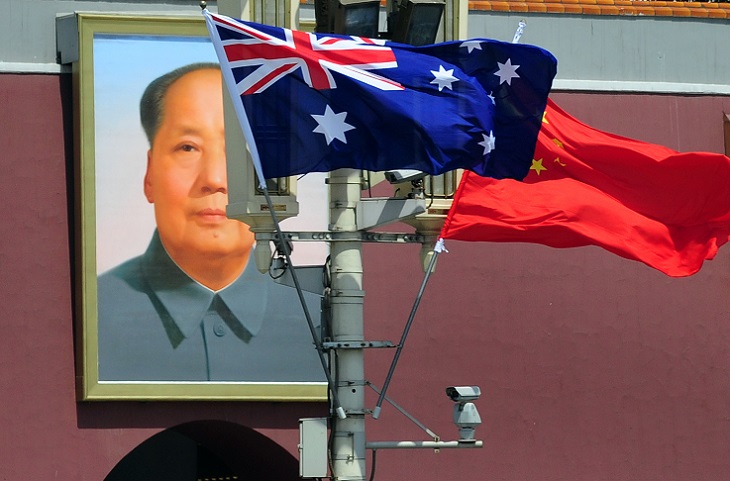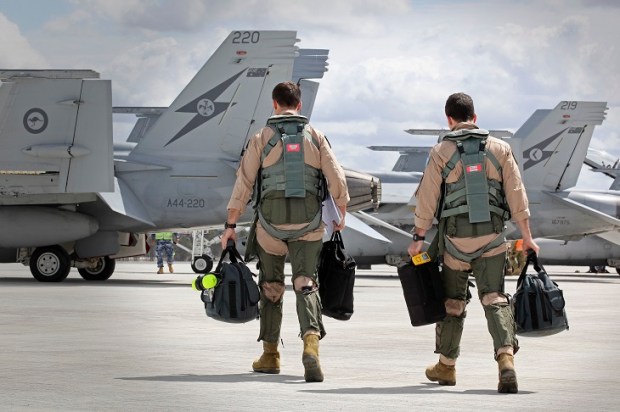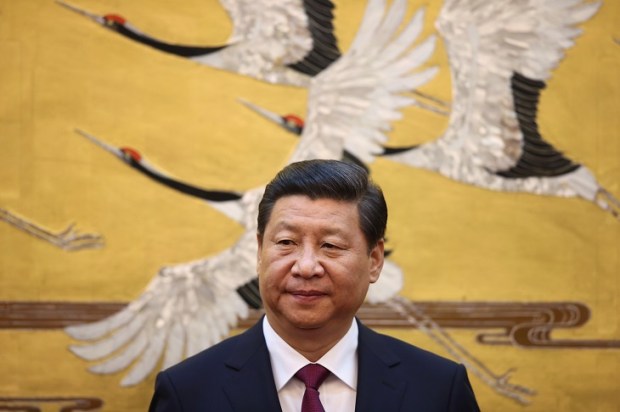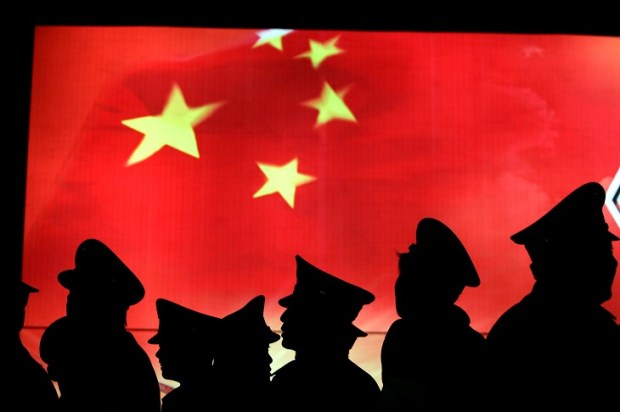[ This is part 3 of a series. Read part 1 and part 2 ]
The truth lurking under the political spin is that the Australian Defence Force (ADF) is not fit-for-purpose despite operating amidst the bleakest strategic environment that Australia has faced since 1942.
It is plagued by a threefold disease that must be cured to resolve Australia’s crisis of national security.
Its first affliction is the absence of a coherent strategy about which Australia’s defence may be planned. The second is its chronic under-funding, such that it now requires immediate and mammoth investment. The third failure is one of decision-making, whereby the acquisition of defence capability has become a high-stakes farce.
The remedies for these afflictions may provide a solution to the ADF’s immediate dilemma and a safeguard against future crises.
Solution 1: A Coherent Strategy
In addressing the ADF’s first shortcoming, it must be recognised that its primary objective in recent decades has been to provide a limited niche capability to integrate into the US order of battle as required. There has been no underlying thesis as to how to defend Australia and, despite an ever-changing strategic picture, ADF capability has remained constant for decades.
Thus, a boutique force with a little bit of this and some of that – but no actual hitting power – has been cultivated to provide a symbolic contribution to US endeavours.
Since 9/11, successive governments have merely sought to maintain Australia’s prized status as America’s most reliable partner to preserve the American security guarantee. This brazen tokenism cannot continue – America needs its allies to step-up now to preserve the Rules-Based Global Order (RBGO) that underwrites Australian democracy and prosperity.
As a solution to Australia’s lack of strategy, the ADF should be designated three objectives against which its acquisitions, structure, and funding may be planned.
Firstly, it should aim to contribute to the US-centred deterrent against Chinese adventurism. Second, it should seek to contribute meaningfully to any US-led stand against Chinese aggression. Finally, it should aim to achieve anti-access/area denial (A2/AD) of the Australian continent, waters, and airspace – a task made all the more urgent by the recent China-Solomon Islands Security Pact. The ADF currently achieves none of these objectives, but technology and the nature of 21st century warfare render them eminently achievable.
The first two objectives demand investment in long-range strike capability. This capability must have mass, versatility, and survivability through force dispersion. It would manifest as drones, aircraft, and medium-sized naval vessels with long-range missile capability, mobile land-based missile launch systems, and logistics assets. This would seek to heighten China’s threshold for aggression and contribute to similar efforts by allies in Asia and Europe. However, if the Chinese chanced their hand at war, this strike capability would be required to make a meaningful contribution to US-led defensive and counteroffensive actions.
Despite the bleak strategic picture, many would still question why Australia must commit to these two objectives, rather than merely defend its turf. As the world’s 13th largest economy and a premier democracy, Australia has a responsibility to secure liberty and prosperity for less fortunate nations and future Australians. Until recently, Australia has executed this duty with distinction since the first world war, when almost 40 per cent of its male population enlisted and suffered one of the highest casualty rates – almost 65 per cent.
Unfortunately, the ADF’s lapse into impotence suggests that Australia is on the precipice of abandoning this sacred duty, as New Zealand, and Canada appear to have done. This must not occur if the untold sacrifice of our forebears is to be honoured and Australia is to fulfil the responsibilities that come with its wealth and privilege – responsibilities that only America seems to understand.
The ADF’s third objective, A2/AD, would manifest as the ability to unilaterally deter China from attacking Australia and to repel it if necessary. Thus, the ADF would adopt the Singaporean ‘poisonous shrimp’ strategy, to make the cost of attacking Australia unacceptably high. Such an objective also seems beyond Australia’s reach, but 21st century missile, drone, and loitering munition technology has boosted the fortunes of smaller nations that engage in asymmetrical warfare against hostile goliaths. Indeed, the winds of change favour Australia, but only if we have the sense to ride them.
Ukraine’s asymmetric tactics in defending against Russian invasion have shown the way for the ADF if it ever sought to achieve A2/AD against China. Similarly, the Nagorno-Karabakh war of 2020 demonstrated that drones and loitering munitions can be used with decisive effect. Both recent wars offer invaluable lessons for the ADF, which is equipping to fight in the 20th century, if at all. Indeed, the government has no plans to acquire armed drones and its missile announcements will be delivered so far in the future and on such a small scale as to be irrelevant.
If Ukraine (GDP $US150bn) can defend against invasion by its immediate neighbour over an extensive land border, then Australia (GDP $US1.3 trillion) can certainly hope to repel a distant power approaching with vulnerable naval assets. As simplistic as it may sound, it remains true that two million Chinese soldiers cannot invade Australia if their transports are sunk en route. Chinese fighters cannot strike Australian cities if their carriers are held at distance for fear of Australian missiles. Chinese destroyers cannot blockade Australia if they are vulnerable to Australian drone strikes. Of course, the presence of Chinese forces in the Solomon Islands complicates matters.
The strike capabilities for the ADF’s first two objectives would also contribute to A2/AD. However, there would be greater emphasis on mobile land-based missile launch systems, which would operate in the vastness of Australia’s north, rendering them difficult to locate and destroy. The destruction of any one such platform – of which Australia would have hundreds – costing $10 million and crewed by 5 soldiers would be far less devastating than the loss of a $3 billion destroyer and its 200 sailors. For the purpose of A2/AD, the ADF would also acquire numerous smaller naval vessels, akin to the Chinese Type 22 Missile Boat and Type 056 Corvette, with the missile capability eloquently advocated by Mr Katter. Submarines should feature heavily in the achievement of all three objectives, but will be such a challenge to acquire in the near-to-medium term that it is best to plan without them entirely.
A monumental near-term financial investment, coupled with a radical change in defence decision-making would be required to achieve these objectives. This is actually a symptom of a fortunate reality for wealthy Australia – more so than ever, victory in war can be purchased with money (via technology) rather than blood. Nevertheless, the need for massive investment and a new decision-making paradigm are significant challenges in need of solutions, with a Defence Levy and an accompanying legislative and bureaucratic apparatus two possibilities.
Solution 2: A Defence Levy
The task of sourcing the colossal sum of money required for the ADF is more difficult than recognising the strategic imperative. Australia’s federal budget was already in an appalling state before the Covid pandemic, which has left it in an historic mess. Government outlays are unsustainable and there is simply no scope to responsibly spend more.
So, where to find the money to fund Australia’s defence?
In 2022-23, the federal government will spend $580.5bn – $202bn (35 per cent) on welfare, $94bn (16 per cent) on health, $76bn (13 per cent) to the states, $42bn (7 per cent) on education and only $37bn (6 per cent) on defence. Despite these massive outlays, the recent budget and election have demonstrated that spending cuts in non-defence portfolios will not be countenanced.
Welfare, in particular, is a one-way street – once it is given, it is politically impossible to take back, no matter how wealthy the recipient. Indeed, the Covid pandemic has transformed the famously anti-authoritarian and pioneering Australian psyche into one of crippling dependence upon government. Thus, it would be political poison to shift money from any other portfolio to defence, which most Australians view as an irrelevant and alien abstraction.
If increased defence spending is essential, but cannot be sourced from savings, the only alternative is a new source of funding – a tax. Many taxpayers detest Australia’s existing tax burden and would begrudge the introduction of new taxes to compensate for bad policy and weak politicians. However, this crisis is exceptional in Australia’s history and demands a similarly extraordinary response. Nevertheless, the Flood Levy after the 2011 Queensland Floods provides ample precedent.
Delineating the particulars of a Defence Levy is a harder task than establishing the need for one. It is easy for a layperson to deduce Australia’s appalling strategic position and to conclude the need for a new tax, but experts in taxation, economics, and law are required thereafter. Notwithstanding the need for expert input, a Defence Levy can be outlined in broad terms to demonstrate its utility and potential weaknesses.
An income tax is easiest to conceptualise and was employed for the Flood Levy. Whereas the Flood Levy had a three-tiered system, the scale and longevity of the Defence Levy would demand that it align with the standard income tax brackets. The specific tax rates would be calculated from the ultimate figure to be raised and the conclusions of government as to what would be fair for each income bracket to pay.
It is imperative that all citizens contribute toward Australia’s defence. Everyone has much to fear from a loss of sovereignty and this common threat must be converted into a sense of collective struggle. Therefore, an argument could be made for the levy to also recoup some small fraction of welfare payments, particularly ‘Middle Class Welfare’ – benefits paid to those earning as much as $350 000. In fact, welfare recipients would likely lose the most from war as Australia’s welfare state would be abruptly and radically curtailed to fund the nation’s defence or completely abolished in the event of Chinese victory. Nevertheless, as with the current system, the wealthiest would pay the most because they can afford to do so.
Why would this tax be more palatable to Australians than funding the ADF with cuts to other portfolios? A Defence Levy would obviate the need for massive cuts to welfare, health, and education. While taxation of welfare would regrettably generate a wasteful money-go-round, these politically-sensitive portfolios would remain untouched. Any government introducing the Defence Levy would fight a political battle over a new tax, rather than the cutting of sacred cow budgetary items. As by far the lesser of two evils, this is an important distinction.
While a great big new tax – to quote Tony Abbott – would still be a difficult sell, a government would have three sales strategies. Initially, it would merely have to prove to the nation that it faces an existential threat. Given the scale and urgency of the crisis, there would be no need for hyperbole, propaganda or lies, just the truth. If communicated effectively, most Australians would understand the strategic imperative, particularly in light of the recent China-Solomon Islands Security Pact.
The second strategy would be to ensure that the burden is shared by all, as described above. Accusations that the rich are not paying enough will always emerge, but a wise government would use the Defence Levy to foster a sense of common struggle. People will always complain, but any media celebrities or politicians who encourage such unpatriotic sentiment could be readily shamed by those rational personalities who will, hopefully, come to the fore during this crisis. Indeed, the tawdry Cancel Culture, gleefully practiced by closet totalitarians throughout Western society, may have found a useful purpose in preserving democracy.
The final sales tool would be to prove to Australians that their money was being spent wisely. A key source of cynicism amongst the populace is the commonplace waste of taxpayer money for political purposes and imbecilic projects. Australians cannot tolerate their money being pissed against the wall. This must not occur with the Defence Levy. Advertising, perhaps doubling as an ADF recruitment campaign, could show Australians where their money has gone. Similarly, payslips or tax returns could stipulate the specific defence project to which each taxpayer’s money has contributed. Most importantly, however, would be the actual remediation of the appalling decision-making that has plagued defence acquisitions in recent decades.
Got something to add? Join the discussion and comment below.
Get 10 issues for just $10
Subscribe to The Spectator Australia today for the next 10 magazine issues, plus full online access, for just $10.


























Comments
Don't miss out
Join the conversation with other Spectator Australia readers. Subscribe to leave a comment.
SUBSCRIBEAlready a subscriber? Log in